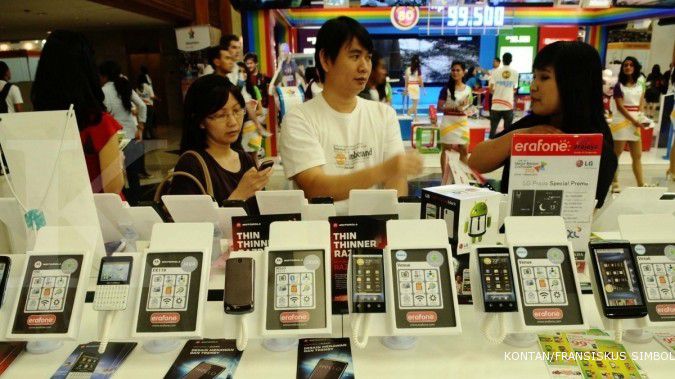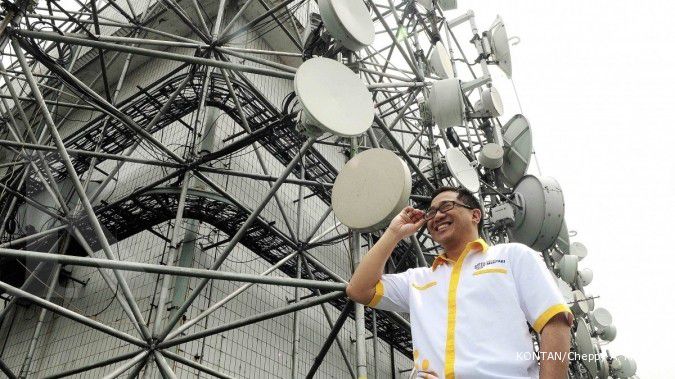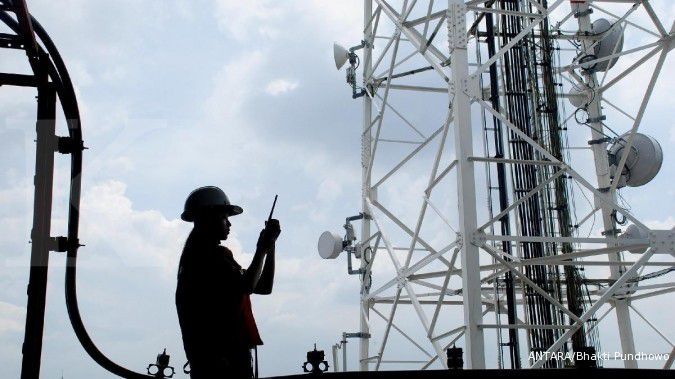Analysts and the company’s executive offered mixed reactions over PT Indosat’s 2012 annual report that shows a 52.5 percent decrease in profits despite improving revenues and declining debts.
JAKARTA. Although the telecommunication company saw their debt burden ease by 6.1 percent year-on-year to nearly Rp 22 trillion (US$2.27 billion) by December 2012, its operating expenses rose 11.5 percent to Rp 19.5 trillion while expenses on capital goods climbed 4 percent to Rp 6.3 trillion.The operator’s spending also included expenses related to capital financing that rose by 303.3 percent to Rp 3.3 trillion and components associated to net financing that jumped by 46.6 percent nearing Rp 2.7 trillion. The operator, however, did not provide details on these expense components.The rise in expenses occurred amid a 10.4 percent revenue gain to Rp 22.7 trillion. The operator’s cellular service contributed 82.5 percent, equal to Rp 18.7 trillion, to revenues, while non-cellular services chipped in the remaining Rp 3.95 trillion.Alexander Ruslie, Indosat CEO and president director, said that the company was “happy” with the 2012 achievements, which included financial and operational improvements.“Moving forward, we are preparing to face a more competitive yet promising industry in 2013, especially in trying to capture data growth,” he said in a press release.Indosat also reported that their earnings before interest, taxes, depreciation and amortization (EBITDA) grew by 10.2 percent to Rp 10.5 trillion, with EBITDA margin resting at 46.5 percent, a fraction lower than the 46.6 percent EBITDA margin in 2011.Revenue drivers included the 13.1 percent rise in subscribers to 58.5 million amid a 10 percent increase in minutes of usage (MoU), which hit 104.4 minutes per subscriber.Indosat’s numbers are in line with industry trends. Data on operators from Frost & Sullivan shows that non-voice revenues, which include data, will contribute 40.7 percent to revenues in 2013, up from 38.2 percent last year.Although subscribers were capitalizing on the network more, the operator saw a 2.1 percent decline in average cellular revenue per user (ARPU) to Rp 27,800. Likewise, the drop in ARPU is a general trend in the industry, given that Indonesia has one of the lowest ARPU’s in the Southeast Asian region.Indosat also reported that its number of base transceiver stations (BTS) had increased by 13.9 percent to 21,930 in total. Its third-generation (3G) BTS, however, recorded a sharp 33.7 percent proliferation to 4,596 units while its second-generation (2G) BTS grew by 9.6 percent to 17,334 units.The sharp rise in 3G-enabled BTS reflects the operator’s aim to magnify their focus on data service. Indosat previously stated that they have set aside roughly US$800 million in capital expenditures, a majority of which would go into networks.Meanwhile, Reza Priambada, an analyst with PT Indosurya Asset Management, said the constant investments the operator had put into its business, coupled by its level of debt, had placed pressure on revenue The Jakarta Post





